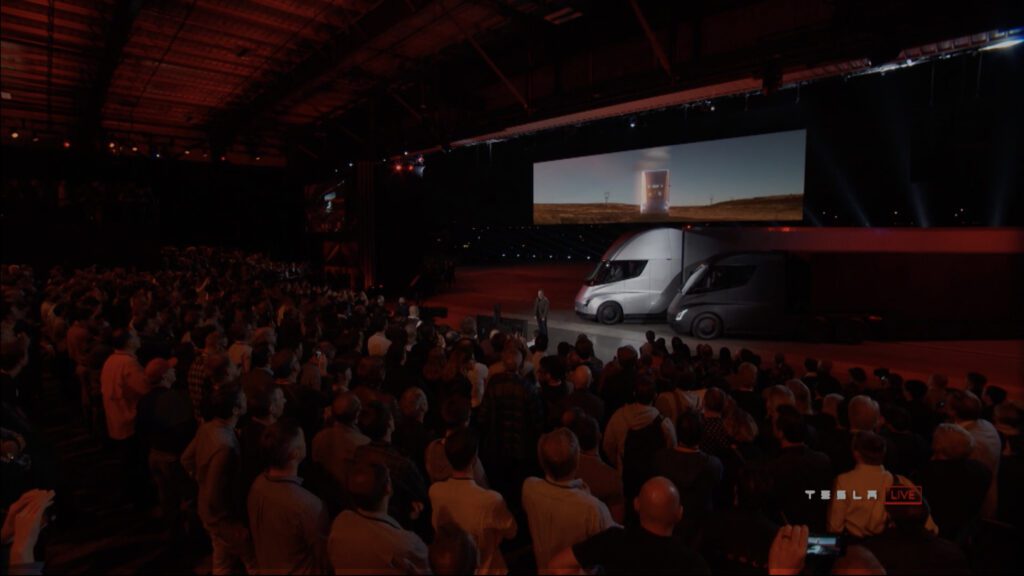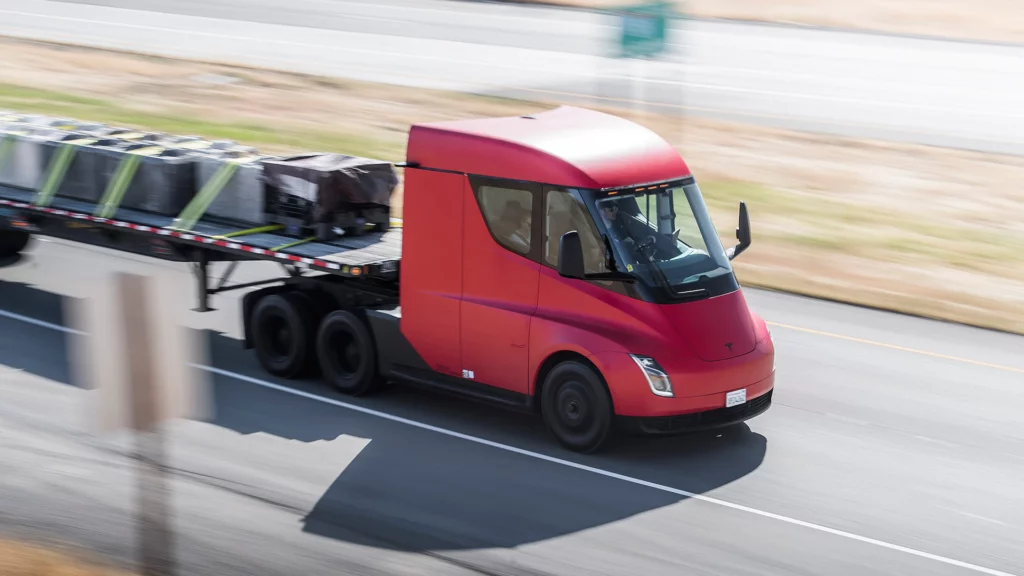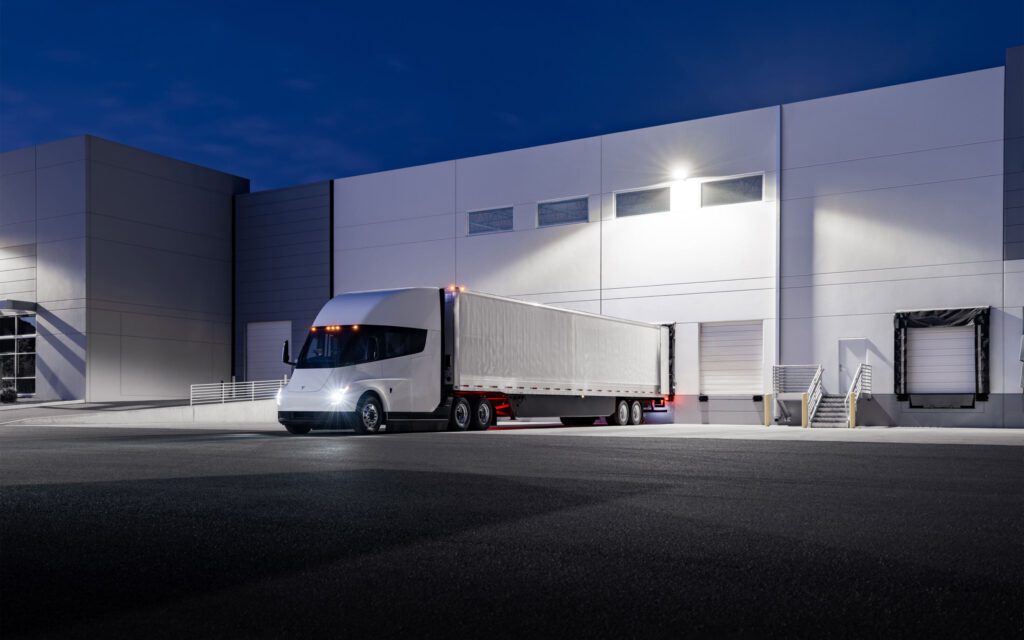Before you start scrolling, this is not just another story about Elon, promise. The most shocking part, it has ALMOST nothing to do with Twitter. Unbelievable? Think again. Whether you’ve got a fresh CDL or are an established member of the trucking industry, you’ll definitely want to read this. In the seemingly ancient year of 2017, Tesla mentioned venturing into the trucking industry. Now, 5 years later, they’ve actually done it… or so it seems. Tesla has finally brought their technology to the trucking industry with an all electric semi-truck cleverly dubbed: The Tesla Semi. Now the real question, can it take on a market that has been absolutely dominated by diesel-power for decades?

Semi-Sweet Beginnings
The Tesla Semi The Semi was first mentioned all the way back in 2016 in the ‘Tesla Master Plan’ with an actual concept vehicle being unveiled in November of 2017. They quickly caught the attention of the media, touting things such as a consistent savings of around 20 ¢/mi to operate when compared to that of a traditional diesel truck, when charged at a ‘Megacharger’ that is. A dream of the company which they claimed could guarantee a price of 7¢/kWh. With the original production being slotted to begin in 2019, Tesla aimed to supply 100,000 trucks per year by 2022. Clearly, that’s not quite how it worked out. The start of production ended up being delayed until October 2022 and finally, the delivery date of December 1st arrived. Today, we now have the best opportunity to take a look at what exactly Tesla is bringing to market.

A Bit of a Weight Problem
When Elon Musk made the announcement back in 2017, a lot of feathers were rustled. The majority of engineers at the time agreed, with where Tesla’s and battery tech in general was in 2017, the weight would need to be nearly double for the semi to remotely stack up against the diesel competition. This was even backed up by theoretical analysis by researchers at the Carnegie Mellon College of Engineering, concluding that while feasible for short or medium range hauling, long distance would take up more than the weight allotted by current U.S. Law. One estimate for the battery weight was a shocking 26,000 lbs, a whopping third of the payload, increasing the capital cost to nearly double the equivalent diesel rig.
Where There’s A Will, There’s A Weigh?
That was 2017, fast forward through the ups, downs, and shortages of the past 5 years and finally in October 2022, Elon announced on Twitter the start of production of the 500-mile (800 km) range model would be delivered to PepsiCo on December 1, 2022.
Tesla team just completed a 500 mile drive with a Tesla Semi weighing in at 81,000 lbs!
— Elon Musk (@elonmusk) November 27, 2022
In light of that news and without further ado, I give you Tesla’s idea of the future of trucking:

According to Tesla, fully loaded at 82,000 lbs the vehicle reaches 60 MPH in a remarkable 20 seconds all while utilizing less than 2kWh per mile of energy consumption allowing for an estimated range of 500 miles. These outstanding feats are accomplished through three independent rear-axle motors which provide instant torque and unrivaled power at any speed allowing for the safety we’ve come to expect from a professional driver even when climbing steeper grades.
Some online math wizards actually took this information the extra mile concluding that the projected weight of the truck itself.
Our best clue to date for the weight of the 500 mile Tesla Semi. The load, 11 jersey barriers at 4K lbs each, is ~44K lbs. A 53 ft flatbed weighs about 10K lbs empty. Assuming this was the 500 mile test, total weight was 81K lbs so tractor is 27k lbs, 2000 lbs lighter than Tre. https://t.co/yKOTWtASai
— Nikola Insider (@InsiderNikola) November 30, 2022
Safe Travels
Capabilities are great, but what about safety? You’re probably aware that Tesla is no stranger to safety-related criticisms and they certainly have had their hands full these past couple years. It seems that, with semi, they’ve definitely attempted to place themselves on a firm foundation with this latest release. Semi claims it comes with active safety features that pair with both the advanced motor and brakes to allow traction and stability regardless of weather conditions. The most unique feature is found in the cab. A cab which looks like something out of Star Wars, uniquely sits the driver in a centralized seating position allowing the driver premiere visibility. The all electric architecture of the vehicle also aids in decreasing rollover risk and cabin intrusion in cases of accidents.

At What Cost?
Charging with electricity is approximately 2.5 times cheaper per mile than refueling with diesel. Tesla claims that this estimate is based on California’s diesel prices between February and July of 2022. If true, operators will see savings of up to $200,000 within their first three years of ownership. This paired alongside remote diagnostics, over-the-air software updates and fewer moving parts to maintain, operators will find themselves spending less time at service centers and more time on the road, doing what they love, and taking advantage of their investment in every sense of the word.
Will The Tables Turn?
With these new trucks finally reaching the open road and in turn the true beginning of their journey, we can only wait to see how PepsiCo and the others who preordered, go on to utilize this exciting new technology. The future of trucking could very well be at hand. However, only time will tell if they truly are able to stack up against their established, diesel competition. As always with stories like these, we’re all bound to have differing thoughts and ideas. We would love to know yours in the comments below and thank you as always for reading.
Does Tesla Deliver?
Today there will be a live event to mark the delivery of the first Tesla Semis. You can tune into the live stream below at 5PM PST to get all the official details.



